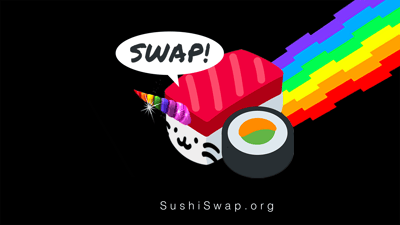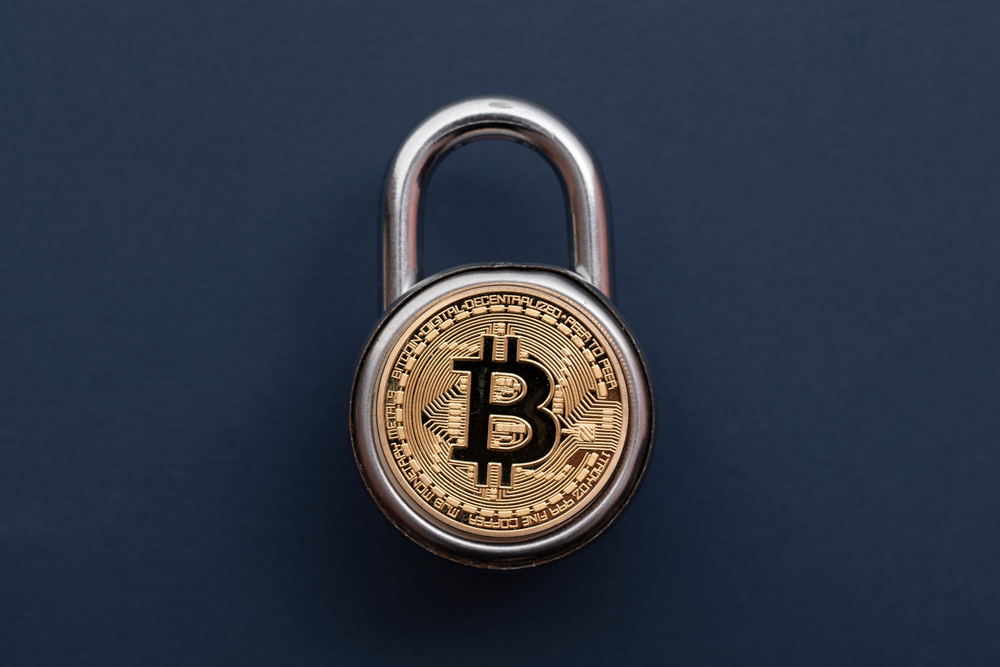Cryptocurrency 101: What Is Decentralized Finance (DeFi)? December, 2025
Decentralized finance (DeFi) is a sector that provides an alternative to traditional financial services. Smart contracts power decentralized applications (DApps) and protocols that makeup DeFi
 Written by Nikolas Sargeant
Written by Nikolas Sargeant
| Fees | Deposit Methods | |||||||||
|---|---|---|---|---|---|---|---|---|---|---|
| Name | Cryptos | Taker | Maker | Withdrawal | Wire | Credit | Trading API | Active Since | Offer | |

1inch.Exchange
Decentralized Exchanges
|
267 | 0.0006 | 2019 |
|
||||||

Curve Finance Exchange
Decentralized Exchanges
|
8 | 0.04% | 0.04% | 0.000079 | 2020 |
|
||||

PancakeSwap
Decentralized Exchanges
|
203 | 0.20% | 0.20% | 0.00041 | 2020 |
|
||||

Uniswap
Decentralized Exchanges
|
390 | 0.30% | 0.30% | 0.000079 | 2018 |
|
||||

SushiSwap Exchange
Decentralized Exchanges
|
79 | 0.30% | 0.30% | 0.00041 | 2020 |
|
||||
Bitcoin's launch in 2009 led to the growth of a robust industry stemming from the asset, its concept, and underlying technology. The crypto and blockchain space contains different niches where projects and companies develop solutions for various use cases.
TLDR:
-
DeFi is a financial technology that eliminates third parties and centralized institutions from transactions. It uses emerging technology to achieve this goal.
-
The regulation and infrastructure of DeFi are constantly changing. There are ongoing developments in both areas, which are always evolving.
-
DeFi comprises stablecoins, software, and hardware that facilitate the creation of applications.
Decentralized finance (DeFi) is a sector that provides an alternative to traditional financial services. Smart contracts power decentralized applications (DApps) and protocols that makeup DeFi. Ethereum was the platform for many of the first DeFi applications, and most of the sector’s total value is still concentrated there.
Bitcoin is decentralized and embodies essential characteristics. DeFi takes these qualities and builds upon them to provide extra capabilities. DeFi is a subcategory of the wider crypto space that offers services like traditional finance but is controlled by the masses instead of a central entity.

DeFi applications have expanded beyond lending and offer access to saving, investing, trading, and more. Its purpose is to challenge traditional financial services providers and eventually replace them. DeFi uses open-source code, allowing anyone to build on existing applications in a composable and permissionless manner.
Decentralization means no central body is in control. Banks and other financial institutions have power over your funds and can freeze your assets. You are subject to their operating hours and cash reserves. DeFi disperses power and risk. When customer data is centralized, hackers just need access to one site to access a lot of data. Storing data across multiple locations or removing single points of failure can improve security.
Advantages and Disadvantages of DeFi
Pros
-
Decentralized Exchanges (DEX) - Smart contracts are the foundation of online trading platforms known as DEXes. With DEXes, users can exchange tokens and conduct trading without intermediaries.
-
Lending - The crypto loan industry is appealing to a lot of people. Lenders earn interest, and borrowers can access capital. In DeFi, borrowers can use their funds as collateral and borrow without needing a credit score.
-
No loss Games - DeFi includes games and lotteries which are appealing services. There are "No-loss" lotteries that appear to be safe as participants receive their money back. Only one winner gets all the profit from the shared pot. Without intermediaries, smart contracts within DeFi handle all the processes.
-
Non-Fungible Tokens (NFT) - NFTs are a new development in the world of cryptocurrency, with various applications such as digital ownership of art, collectibles, gaming, sports, real estate, and media and entertainment forecasted to shape the future of digital ownership.

Cons
-
Uncertainty - If the blockchain supporting a DeFi project is unstable, the project will also become unstable. The Ethereum blockchain is undergoing changes that may introduce new risks for DeFi projects.
-
Scalability - DeFi projects face scalability issues with the host blockchain, resulting in slow confirmation times and high transaction costs during congestion. Ethereum can only process 13 transactions per second compared to centralized counterparts that can process thousands.
-
Lack of Insurance - Insurance is important in centralized finance to protect investors from fraud and hacks, while it is less common in DeFi.
-
Low Interoperability - There are various blockchains with their own DeFi ecosystems, but interoperability is necessary to interact with each other. Without it, projects are separated.
Top Five DeFi Exchanges
We will talk alot about DeFi and how it works in this article, so it only makes sense to give you some examples of the very best DeFi exchanges operating today. In no particular order we’ve put together five of the very best.
-
Uniswap: Low fees and holds liquidity in DeFi.
-
1inch: Finds the best exchange rates for you and no fees on deposits and withdrawals.
-
PancakeSwap: Fees as low as 0.25% registered on the BinanceSmart Chain.
-
Curve: Focus on stablecoins and offers versatile swaps.
-
SushiSwap: Commendable UX design and broad range of ETH-based DeFi tokens.

Centralized Finance (CeFi) and Decentralized Finance (DeFi)
Decentralized finance is different from traditional, centralized financial institutions and banking. Banks and third parties hold money in centralized finance and handle its movement between parties, with fees charged for their services. For instance, a merchant initiates a credit card charge through an acquiring bank and then to the credit card network.
The bank receives a payment request after the network clears the charge. Credit and debit card usage by merchants results in payment for the services provided by each entity in the chain. Centralized finance oversees all financial transactions, including local bank services and loan applications. DeFi aims to decrease transaction times and increase access to financial services.
Decentralized Finance
Decentralized finance uses emerging technology to enable financial transactions without intermediaries. DeFi operates through peer-to-peer financial networks and utilizes security protocols, connectivity, software, and hardware advancements. This approach empowers people, merchants, and businesses to conduct transactions without traditional financial institutions.
People can borrow, lend, and trade with software that records and verifies financial actions in distributed financial databases wherever they have an internet connection. Distributed databases glean data from various locations and use a consensus mechanism to verify it, ensuring accuracy.

Decentralized finance allows anyone to access financial services without relying on a centralized system. This is made possible through DeFi applications that offer individuals personal wallets and trading services. DeFi gives users more control over their money, and can use financial services from any location.
Decentralized finance does not offer complete anonymity to users. Transactions may not contain personal information but can be tracked and accessed by various entities, including governments. Laws exist to safeguard an individual's financial well-being.
Why Is DeFi Important?
DeFi enables decentralized banking and eliminates intermediaries through a P2P network. Before this, transactions need to be approved by third parties. The 2008-09 financial crisis revealed that middlemen need to be more trustworthy, as customers often need to gain knowledge of financial product and service regulations.
DeFi aims to establish an open, trustless, and permissionless financial market. The technology utilized in the DeFi space aims to enhance the current financial system and potentially enhance the user experience for businesses and clients.
Uses of DeFi
DeFi revolves around peer-to-peer financial transactions. These transactions occur when two parties exchange cryptocurrency for goods or services without any involvement from a third party. DeFi enables individuals to get loans through P2P. An algorithm pairs peers who mutually agree to the lender's terms, and they're issued a loan. These payments flow through a dApp and follow blockchain protocols.
DeFi is being widely used in various scenarios today. Its use cases include:
-
Payments - DeFi can facilitate P2P payments without requiring a central authority.

-
Stablecoins - Stablecoins are becoming more popular in DeFi. They aim to reduce cryptocurrency volatility by tying coin value to another asset, commodity, or currency.
-
Yield farming - Investors utilizing DeFi can earn interest income on their cryptocurrency assets through yield farming.
-
Lending - DeFi often involves borrowing and lending cryptocurrency assets. This practice is a popular use case for DeFi.
-
DApps - DeFi powers DApps, which can support various use cases like gaming and financial services.
-
NFTs - Users can own non-fungible tokens that can be traded.
Benefits of DeFi
DeFi brings several advantages to users that can boost their trust, confidence, and security in cryptocurrency transactions and applications. These advantages include the following:
-
Anonymity - Smart contracts on the blockchain can provide transparency, but user identification is not necessary or mandatory. In the case of DeFi, centralized and regulated models do not demand Know Your Client requirements.

-
Control - DeFi enables users to have control over their assets. The user holds the cryptographic private key for their cryptocurrency tokens.
-
Decentralization - DeFi is decentralized, meaning it doesn't carry the risks associated with CeFi. In CeFi, an exchange's failure can result in user funds and accounts being lost. With DeFi, this isn't a concern.
-
Transparency - Smart contracts allow users to easily comprehend the terms and logic behind a transaction. This is achieved through a transparent model devoid of hidden code.
-
Anonymity - Smart contracts on the blockchain can be transparent, but user identification is unnecessary. DeFi does not require Know Your Client requirements, often used in centralized, regulated models.
-
Fees - DeFi promises lower fees to users without a central authority. This is in contrast to the CeFi model, where transactions often come with higher fees.
-
Permissionless - The decentralized model doesn't require a central authority to approve or enable a transaction. This means the model is permissionless and smart contracts are used to determine what is possible.
Challenges of DeFi
DeFi offers certain advantages but also presents some possible difficulties to consider. These challenges include:
-
Security - DeFi platforms have become frequent targets of attacks. The Federal Bureau of Investigation issued an alert in late 2022, revealing that attackers had stolen over $1 billion in assets in just three months.

-
Customer service - DeFi customer service can be difficult due to lacking a central authority or service for help.
-
Complexity - DeFi's biggest challenge may be its perceived complexity. It operates using a P2P model and relies on smart contracts and advanced algorithms that might be difficult for the uninitiated to grasp. This complexity sometimes causes confusion around how a particular service or application functions.
-
Volatility - DeFi approaches may experience higher levels of volatility due to the absence of a centralized authority to regulate transactions or market momentum.
The Future of DeFi
DeFi is taking the financial industry into uncharted territories. Startups in this field are rapidly growing and will significantly impact the future of finance. At this stage, it's difficult to determine the overall effect of decentralized finance, but initial indications have both positive and negative aspects.
Conventional banking and financial services operate on a closed-door model, but DeFi has opened it up. DeFi reduces costs for users by replacing intermediaries with smart contracts. DeFi apps, like stablecoins, central exchanges, and lending instruments, have introduced new markets. The introduction of DeFi is dramatic.

DeFi's rapid rise must be addressed by banks, insurers, investment firms, and mortgage providers. Dismissing this blockchain-based finance ecosystem would be a mistake and risk losing market share. According to crypto experts, banking services may eventually move to DeFi platforms.
In Summary
To be successful in the fintech space, it's important to strategize when it comes to DeFi. Take time to consider the advantages and disadvantages of decentralized finance and how you can make the most of its booming popularity. Evaluate the risks of regulations, investor interest, and the potential for partnering with traditional finance.
Comments
Log in to post a comment
No comments yet
Be the first to share your thoughts!
| Fees | Deposit Methods | |||||||||
|---|---|---|---|---|---|---|---|---|---|---|
| Name | Cryptos | Taker | Maker | Withdrawal | Wire | Credit | Trading API | Active Since | Offer | |

1inch.Exchange
Decentralized Exchanges
|
267 | 0.0006 | 2019 |
|
||||||

Curve Finance Exchange
Decentralized Exchanges
|
8 | 0.04% | 0.04% | 0.000079 | 2020 |
|
||||

PancakeSwap
Decentralized Exchanges
|
203 | 0.20% | 0.20% | 0.00041 | 2020 |
|
||||

Uniswap
Decentralized Exchanges
|
390 | 0.30% | 0.30% | 0.000079 | 2018 |
|
||||

SushiSwap Exchange
Decentralized Exchanges
|
79 | 0.30% | 0.30% | 0.00041 | 2020 |
|
||||